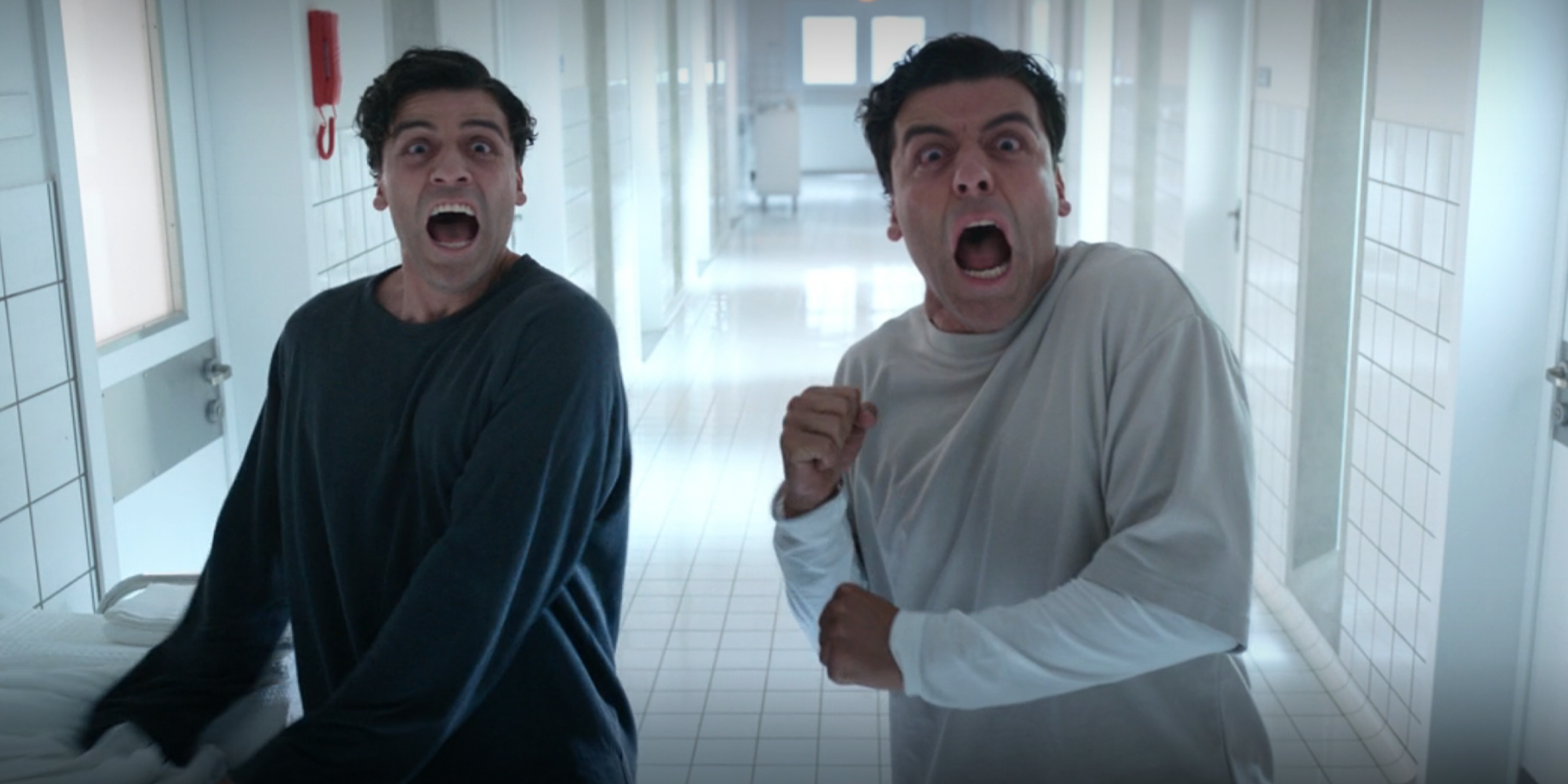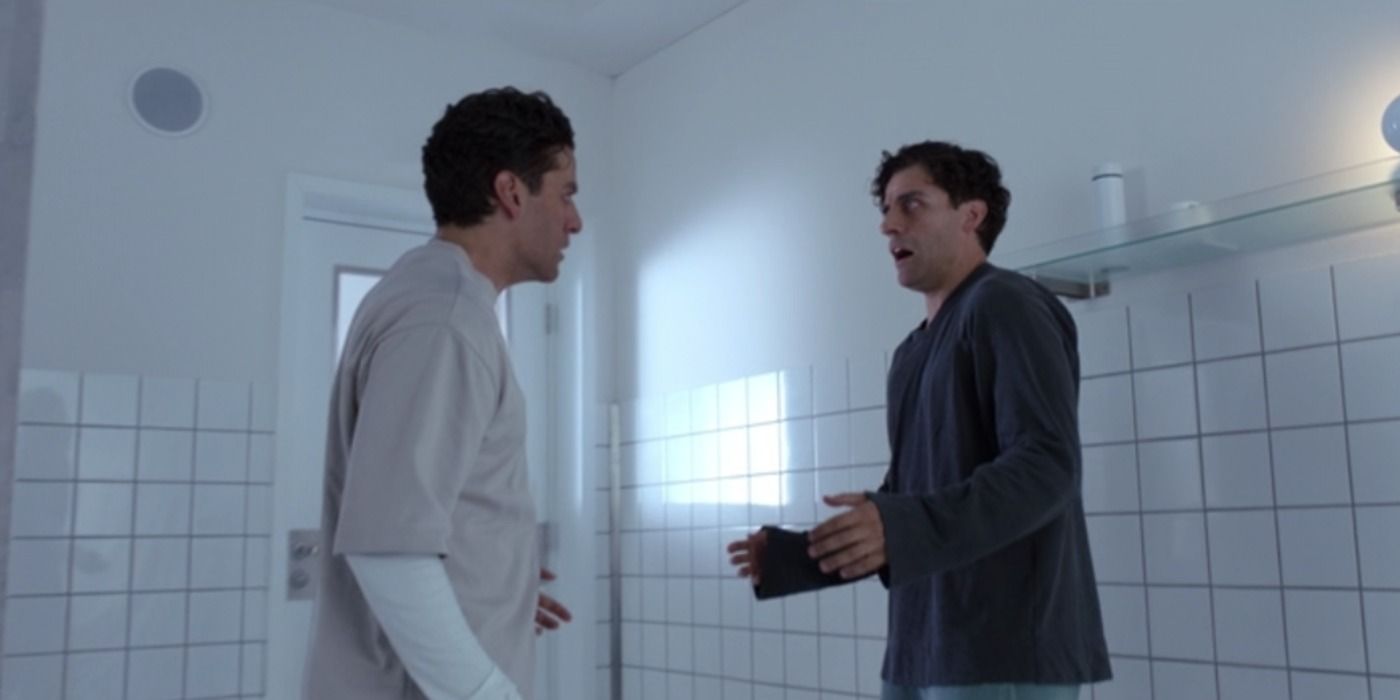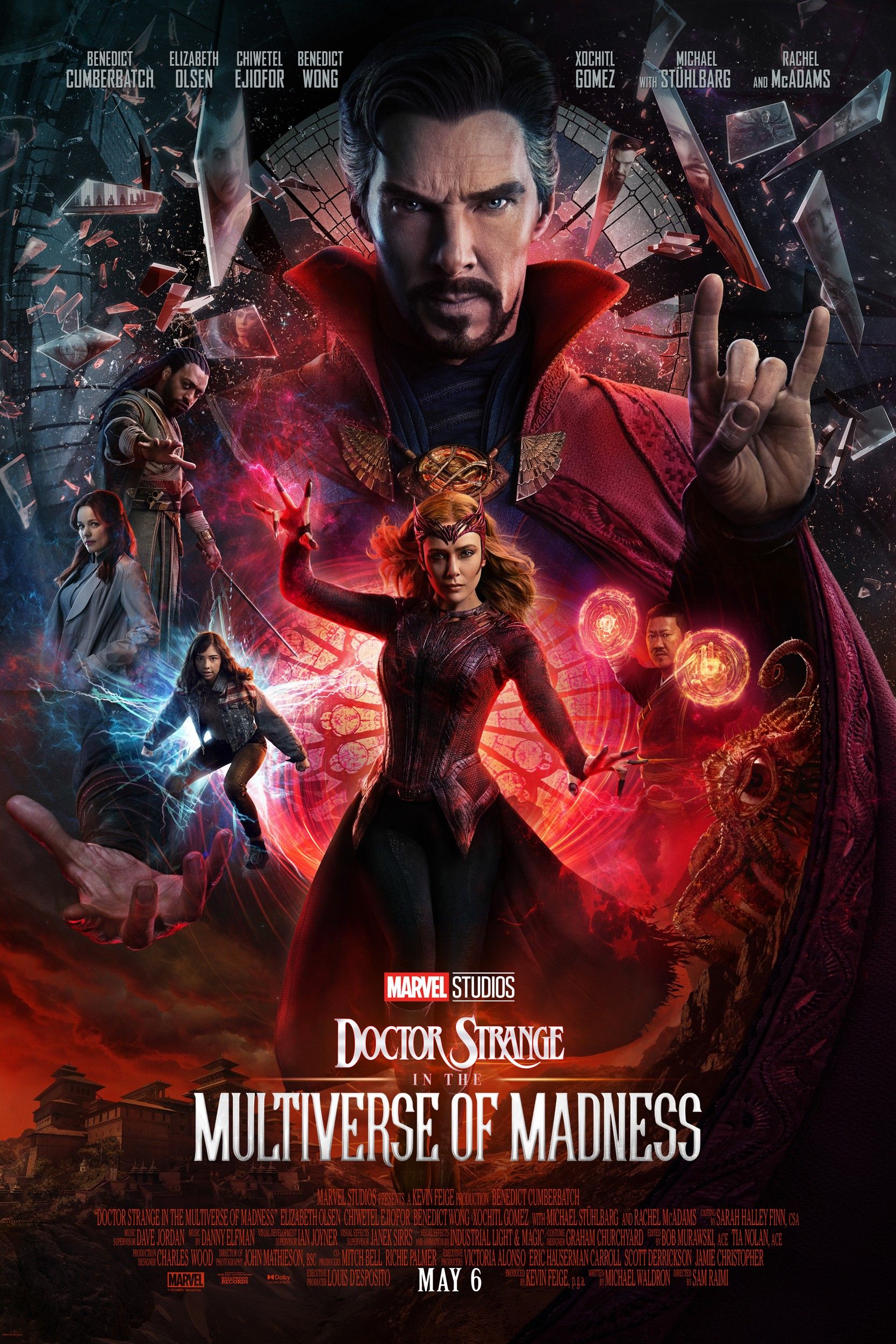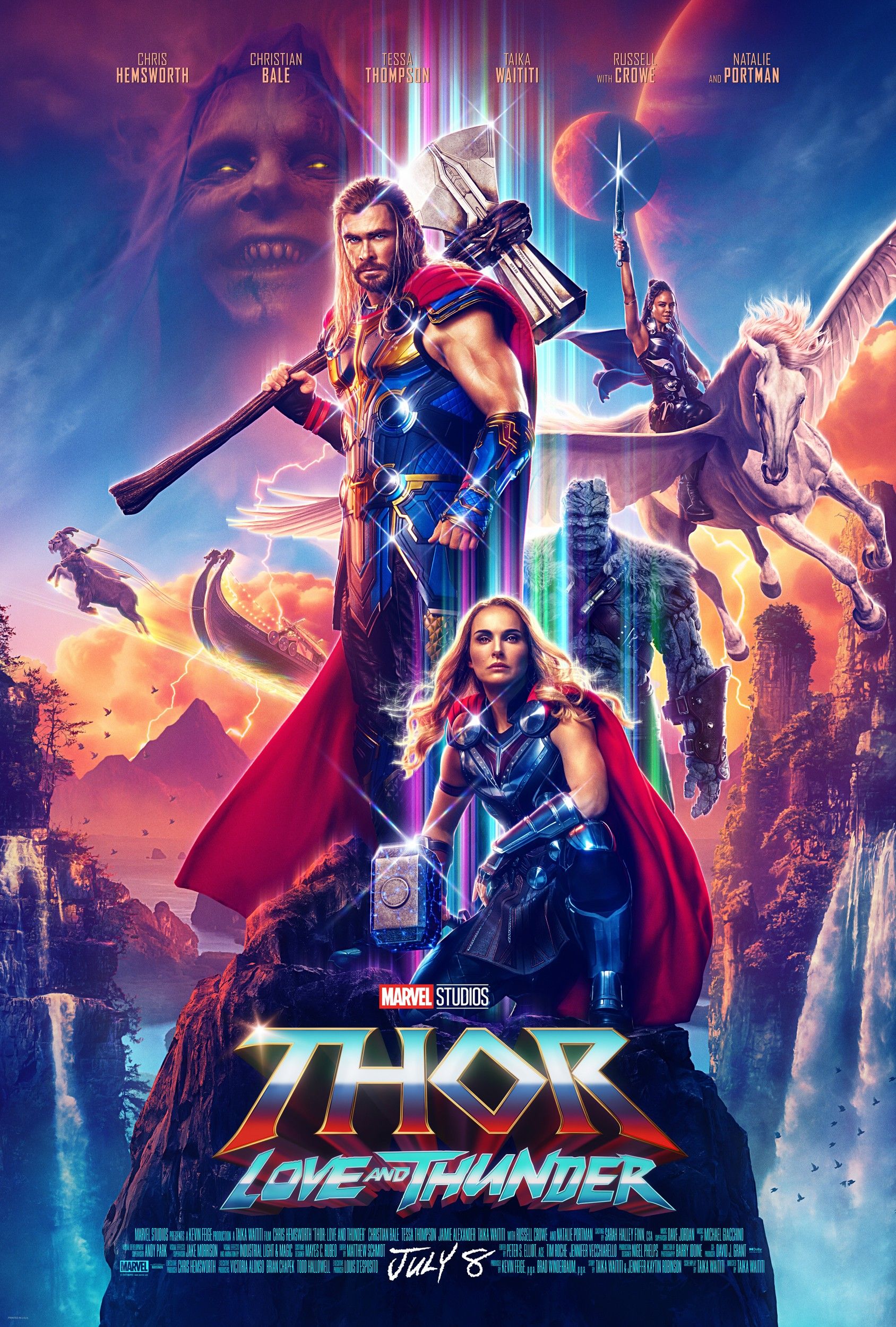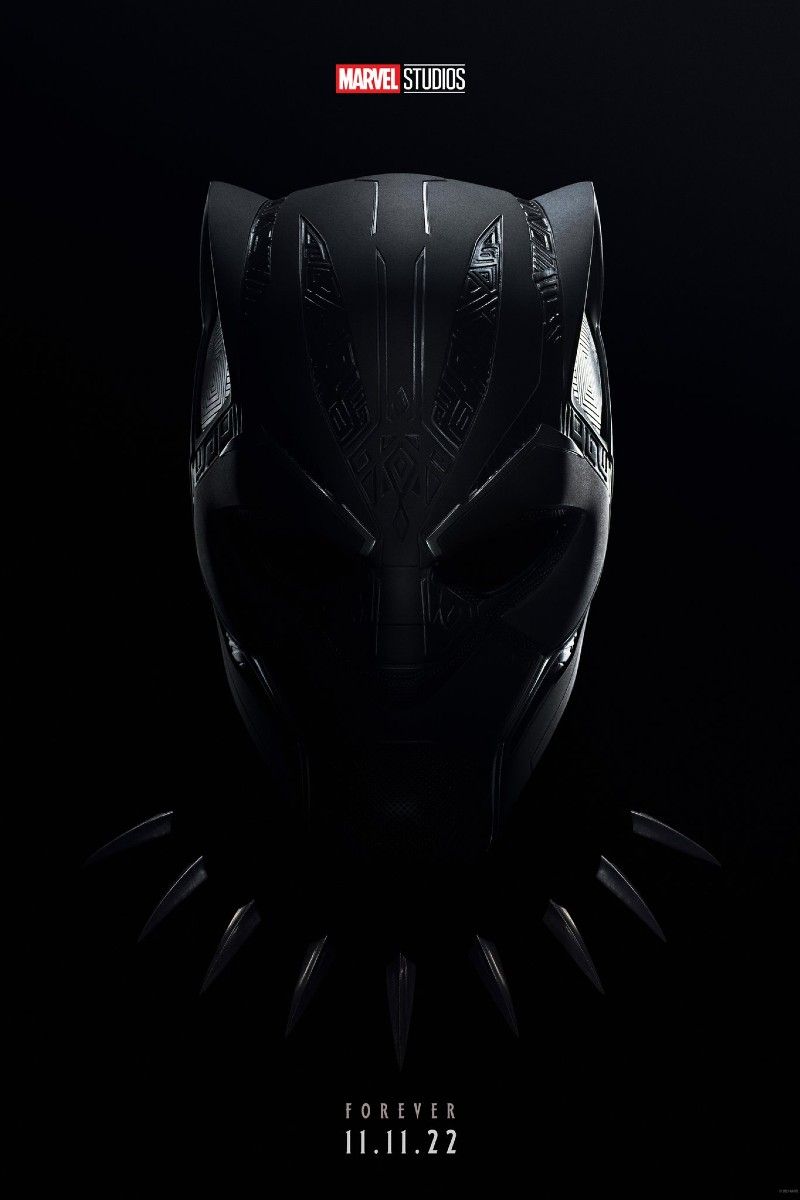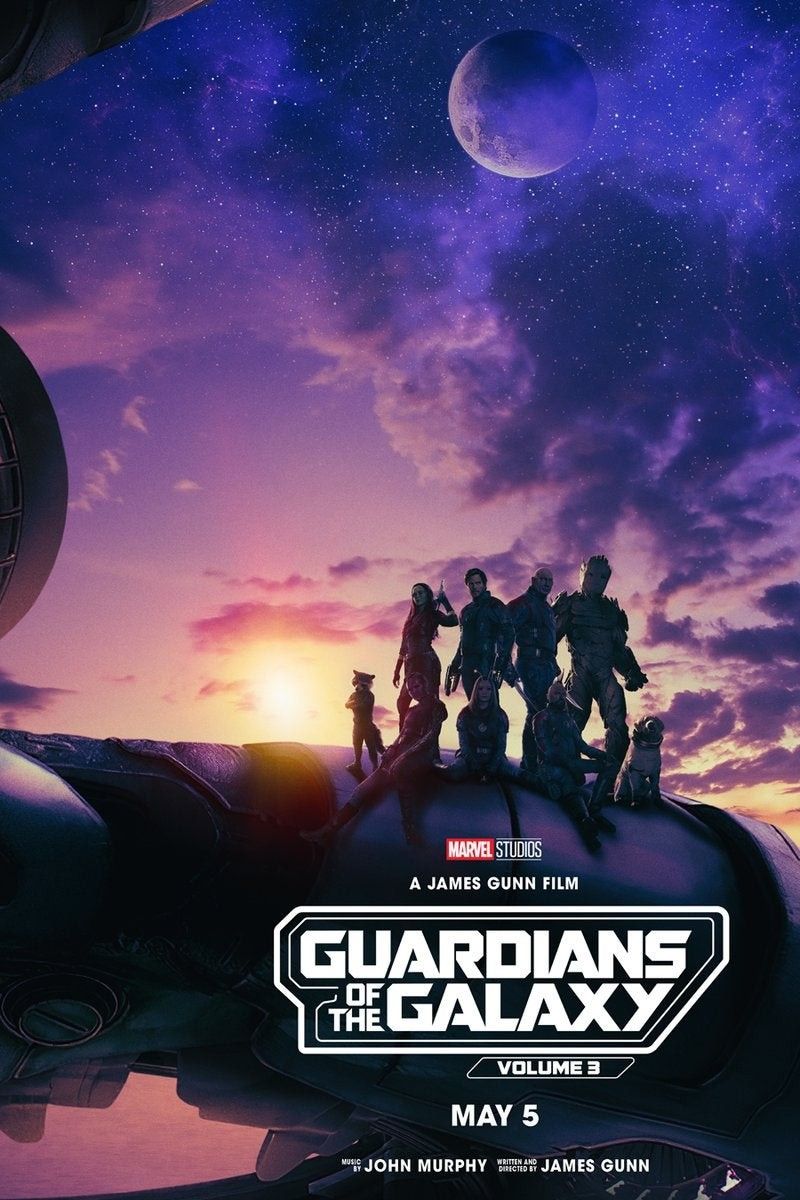Moon Knight directors Justin Benson and Aaron Moorhead explain episode 4's hospital sequence. Moon Knight is the latest series from Marvel Studios which premiered March 30 on Disney+ and introduces Oscar Issac's titular hero to the Marvel Cinematic Universe. Issac leads the cast as Steven Grant/Marc Spector, the two sides of his character who lives with dissociative identity disorder. Episode 3 also hinted at a third and more violent alter who goes by the name Jack Lockley in the comics.
At the end of episode 4 titled "The Tomb," the show's primary villain, a cult leader named Arthur Harrow played by Ethan Hawke, fatally shoots Marc in the tomb of Alexander the Great, where he leaves him to die. However, Marc unexpectedly wakes up in a psychiatric hospital where his love interest Layla (May Calamawy) is a fellow patient and Harrow is the head doctor. After discovering that Dr. Steven Grant is actually the main character in an Indiana Jones knockoff, Marc soon finds his alter-ego in a separate body trapped in a sarcophagus. The pair then meet a high-pitched hippo who is the Egyptian goddess Taweret. Now, Moon Knight episode 4's directors are opening up about its weird and wacky ending.
Talking to EW, Justin Benson and Aaron Moorhead (who directed episode 4), explained how its huge twist ending was created. Moorehead began by explaining the inspiration for the psychiatric hospital sequence, which is intended to "completely disorient the audience." Read what the two had to say below:
Moorhead: The end of episode 4 is actually a gift of the script. It came from wanting to do the least expected thing and completely disorient the audience, while also being completely true to the character that we've built over four episodes. Also the comic book character: There's a run of Moon Knight written by Jeff Lemire, and [Greg] Smallwood did the art, and it has a lot of similar feelings and visuals to what happens at the end of episode 4. So we're really glad to be able to honor the original comics, the ones that we were the most drawn to when we were trying to crack Moon Knight. That's where the inspiration came from, especially visually and tonally.
Benson: We have a general philosophy in scenes where we're trying to unsettle or fill people with dread: Slow is creepy, fast is exciting. Obviously, what is more exciting than being creeped out?
Moorhead: It's obviously not a visceral scene. It's not kinetic, it shouldn't be moving fast. It should feel surreal. It should feel like the point of view of Steven/Marc in that moment. That's where I think over a decade of our prior films really came in handy. We had that toolbox of making those types of stories, that make you feel full of dread and unsettled.
Benson and Moorehead are certainly no strangers to crafting stories that are "full of dread" and other unsettling feelings, as the latter mentions. The duo has previously directed a few reality-bending horror/thriller films such as 2017's The Endless, which centers on a cult, and 2019's Synchronic which stars the MCU's Anthony Mackie. The directing duo's inspirations for the Moon Knight scene are also of note. Other than the obvious Indiana Jones homage, they mainly drew from the Marvel comics written by Jeff Lemire and illustrated by Greg Smallwood.
The result is one of the biggest twists in a Marvel property to date that should leave audiences reeling and excited for the final episodes of Moon Knight following a somewhat slow start. While for a brief moment, audiences might have expected the show's main character to die in that tomb, after the episode's huge twist ending, it is clear this is just the beginning of Steven and Marc's journey together. What the rest of the journey entails remains to be seen - is the hospital just another thing in Steven and Marc's head or is it something else altogether? Two episodes of Moon Knight remain on Disney+.
Source: EW

